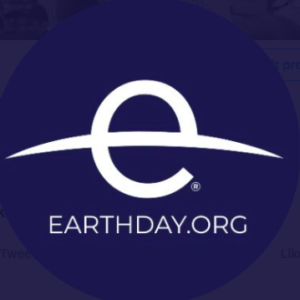Climate Action
Teacher Tips: Marine Ecosystems Lessons
April 17, 2018
For Earth Week and Climate Education Week, our Director of Education, Tracey Ann Ritchie, PhD, has been been connecting with teachers across the country (and the globe!) to share resources and lessons on “Plastic in Our Everyday Lives!”
 One of the themes we’re addressing is Marine Ecosystems, for which we have shared facts about plastic pollution in the oceans. For instance, studies have shown that there is more plastic than prey species on the ocean’s surface at the Great Pacific Garbage Patch. This means that marine animals feeding in this area are extremely likely to have plastic as a major component of their diet. Some sea turtles have been found to have more than 70% of their food intake to include plastic.
Although plastic pollution in the ocean is a daunting issue, we have hope knowing we are educating the next generation of sustainability leaders. One solution to the problem starts right in the classroom with education. In our Climate Education Week Toolkit: End Plastic Pollution, there are a plethora of incredible resources, from TeacherTube videos to hands-on activities. One such activity is “Why Would Animals Eat Plastic?” and can be found in Tuesday’s K-5 section.
More free resources right here.
One of the themes we’re addressing is Marine Ecosystems, for which we have shared facts about plastic pollution in the oceans. For instance, studies have shown that there is more plastic than prey species on the ocean’s surface at the Great Pacific Garbage Patch. This means that marine animals feeding in this area are extremely likely to have plastic as a major component of their diet. Some sea turtles have been found to have more than 70% of their food intake to include plastic.
Although plastic pollution in the ocean is a daunting issue, we have hope knowing we are educating the next generation of sustainability leaders. One solution to the problem starts right in the classroom with education. In our Climate Education Week Toolkit: End Plastic Pollution, there are a plethora of incredible resources, from TeacherTube videos to hands-on activities. One such activity is “Why Would Animals Eat Plastic?” and can be found in Tuesday’s K-5 section.
More free resources right here.
 One of the themes we’re addressing is Marine Ecosystems, for which we have shared facts about plastic pollution in the oceans. For instance, studies have shown that there is more plastic than prey species on the ocean’s surface at the Great Pacific Garbage Patch. This means that marine animals feeding in this area are extremely likely to have plastic as a major component of their diet. Some sea turtles have been found to have more than 70% of their food intake to include plastic.
Although plastic pollution in the ocean is a daunting issue, we have hope knowing we are educating the next generation of sustainability leaders. One solution to the problem starts right in the classroom with education. In our Climate Education Week Toolkit: End Plastic Pollution, there are a plethora of incredible resources, from TeacherTube videos to hands-on activities. One such activity is “Why Would Animals Eat Plastic?” and can be found in Tuesday’s K-5 section.
More free resources right here.
One of the themes we’re addressing is Marine Ecosystems, for which we have shared facts about plastic pollution in the oceans. For instance, studies have shown that there is more plastic than prey species on the ocean’s surface at the Great Pacific Garbage Patch. This means that marine animals feeding in this area are extremely likely to have plastic as a major component of their diet. Some sea turtles have been found to have more than 70% of their food intake to include plastic.
Although plastic pollution in the ocean is a daunting issue, we have hope knowing we are educating the next generation of sustainability leaders. One solution to the problem starts right in the classroom with education. In our Climate Education Week Toolkit: End Plastic Pollution, there are a plethora of incredible resources, from TeacherTube videos to hands-on activities. One such activity is “Why Would Animals Eat Plastic?” and can be found in Tuesday’s K-5 section.
More free resources right here.

